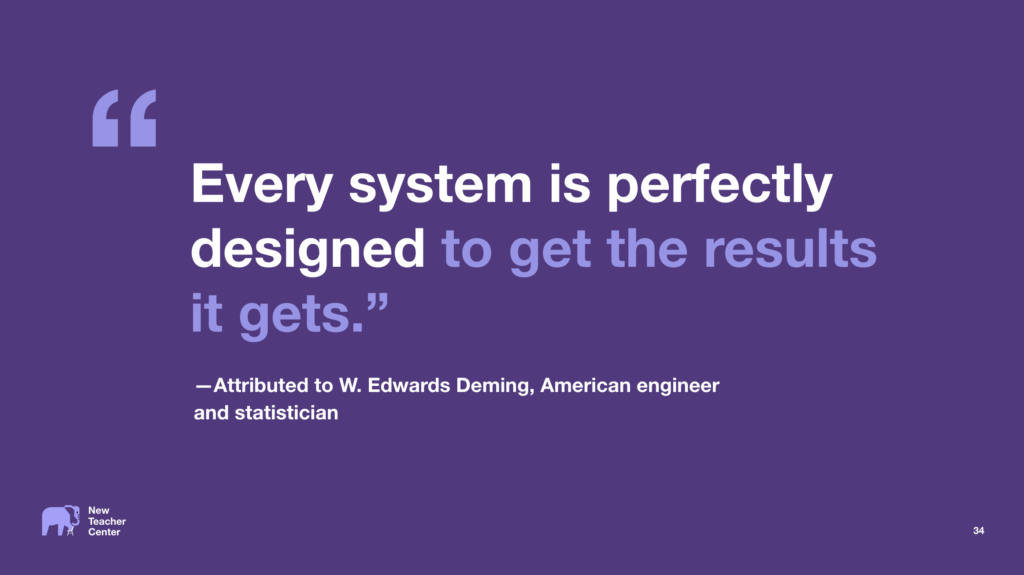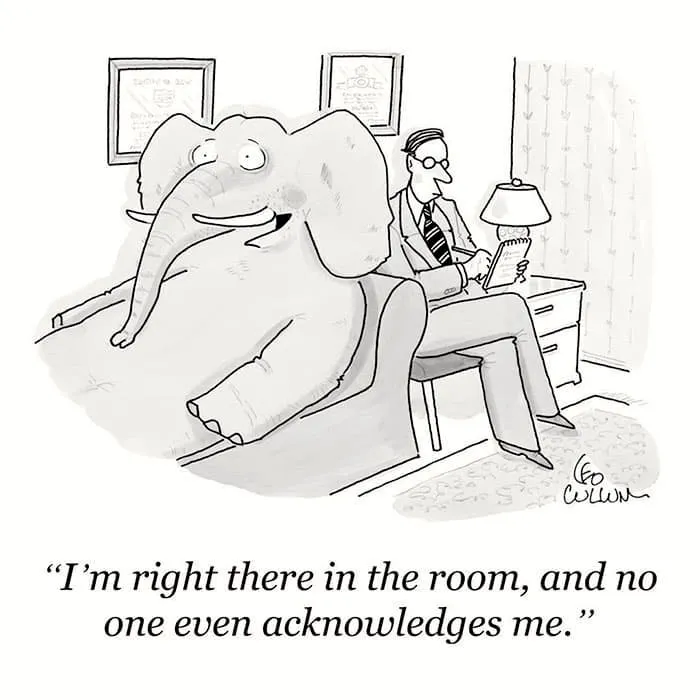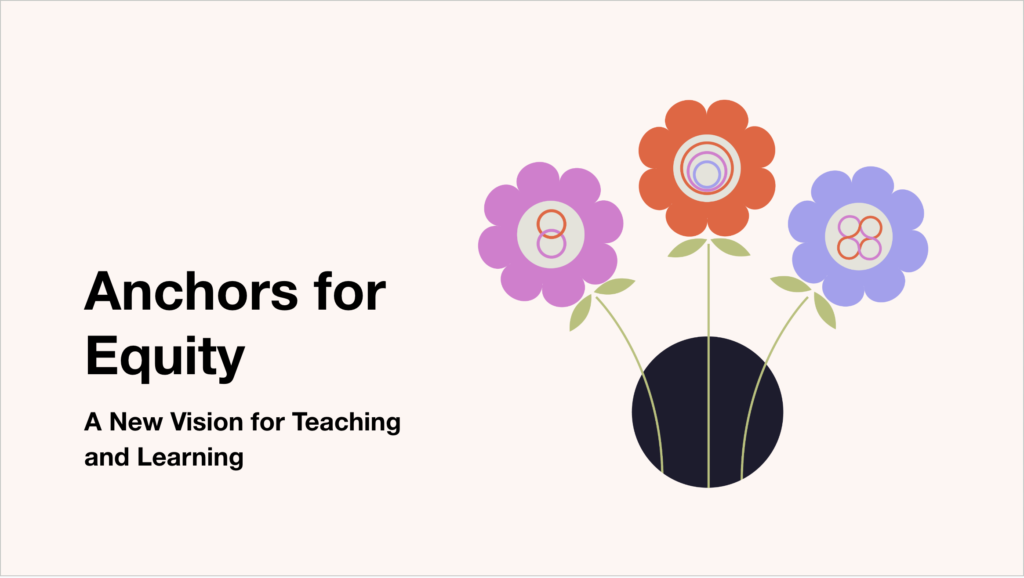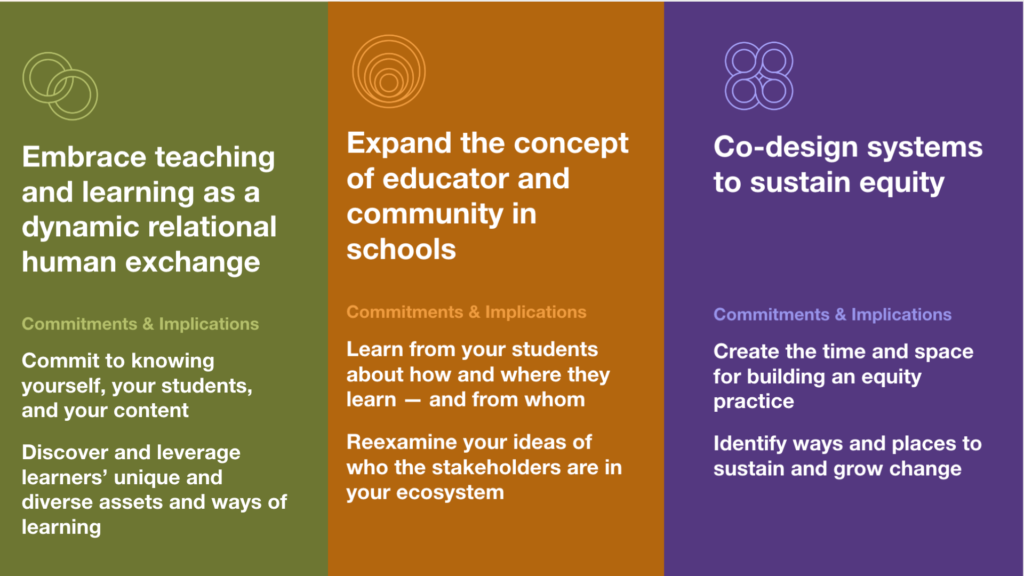
Over the past two years, I’ve moved from a New Teacher Center (NTC) fan to an equity commissioner to a consultant and thought partner.
Last week, NTC released their new point of view on teaching and learning – The Elephant in the (Class)room. The core elements of the point of view document lay out the steps needed at all levels – in the classroom, with the community, by the system – to address “the core truth about how we operate in public education.” They resonate with me deeply. All are needed.

But what excites me the most, as someone who spends time thinking about the best way to frame ideas to move them to impact, is NTC’s decision to reflect the core problem in the title of the initiative. It is a brilliant spin on the common phrase for expressing our ability to ignore big, awkward issues. Starting with the cover, it causes you to ask: “What’s the elephant?” And if you’re sitting with a friend, you’re likely to have two different answers. Because there isn’t just one elephant, there are many elephants that have emerged over time as we have ignored the fact that our education system was designed for an outdated purpose that prioritized efficiency over excellence and equity.

I asked this question of the panelists who joined me for NTC’s launch webinar earlier this week. Their answers (paraphrased):
Fear of change, fear of disrupting the system, fear of angering people, fear of failing. Fear is really what holds me back.
– Yesenia Castro, school leader at KIPP Raíces Academy
The tension between taking action that is right for students – when you have a new framework in mind – but your instructional coach or colleagues may not be on board.
– Crystal Seawood, teacher and artist in residence at The Peale
The status quo of education. We say all the pretty things but are not taking wholesale action.
– Tanji Reed Marshall, NTC equity commissioner, director of P-12 Practice at Education Trust
For me, the elephant is that we have a fundamental distrust that equity and excellence can exist at the same time and believe we have to choose between them. The fact is both are required to do either one well.
What’s especially brilliant about calling out the elephant in the classroom is the fact that classrooms are intentionally constructed environments. So how did the elephant get into the classroom? Did we know it was an elephant when we brought it in? That it would grow to consume the space? Did it start out roaming the building and grounds freely, only to be constrained later for its own protection? Did we open the doors only to find that coaxing the elephant out or imagining how to fill the space if it left was too scary?
I know I’ll be continuing to think about elephants as I work with NTC to help others leverage and use The Elephant in the (Class)room to make changes across its three anchors for equity (see below). Join us for the second webinar in the two-part series on March 21 at 1 ET/10 PT when I’ll talk with Dr. Sharon Contreras, CEO of The Innovation Project in Raleigh, North Carolina, and a former superintendent about How To Use the Elephant in the (Class)room. And, if you missed it, listen to the first webinar.





No comment yet, add your voice below!